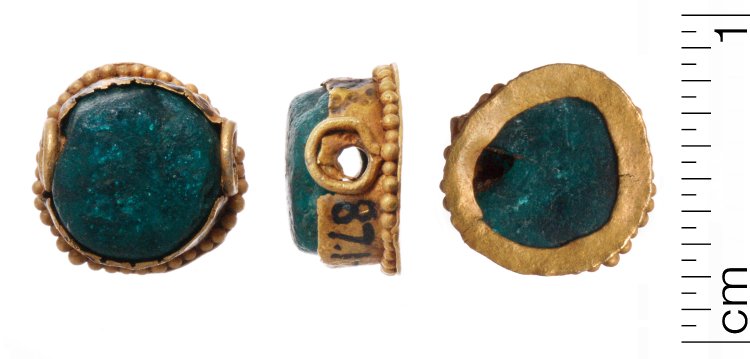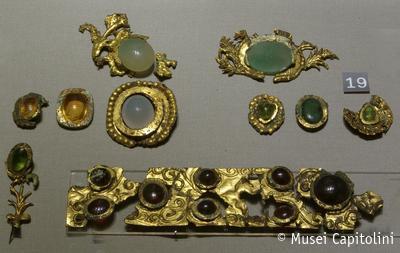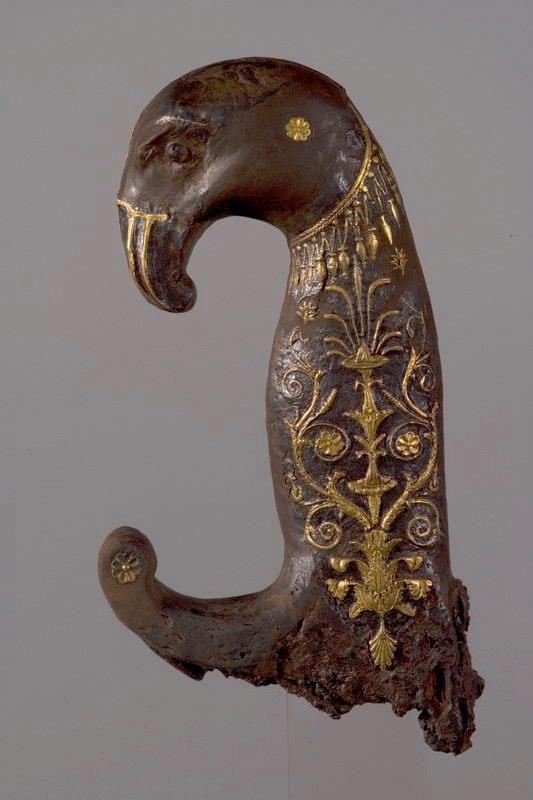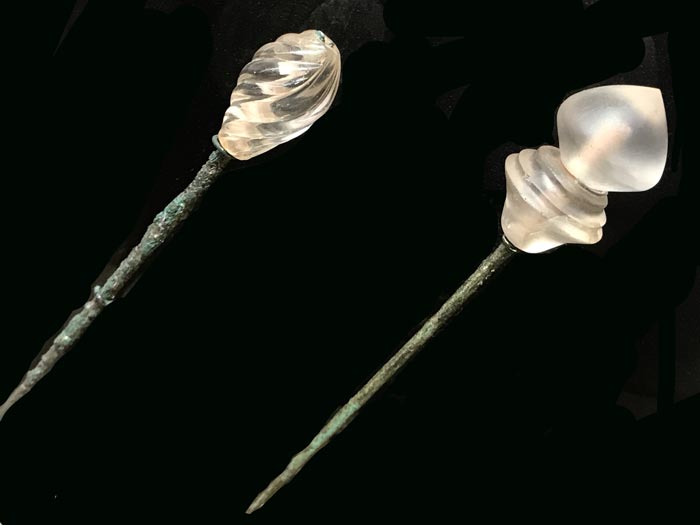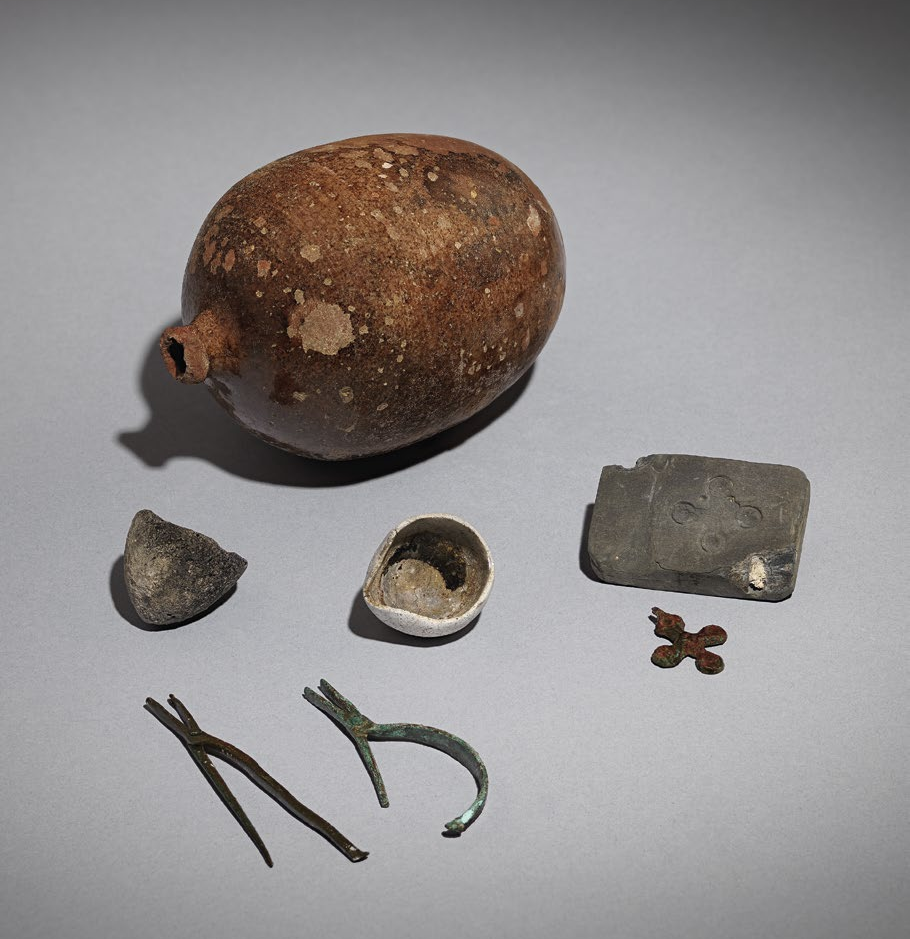the tools used in a Greek or early Roman mint
Cornelius C. Vermeule, Minting Greek and Roman Coins, from Archaeology, Vol. 10, No. 2 (June 1957), pp. 100-107
https://www.jstor.org/stable/41663461
W. H. Manning, A Relief of Two Greek Freedmen, The British Museum Quarterly, Vol. 29, No. 1/2 (Winter, 1964-1965), pp. 25-28
https://www.jstor.org/stable/4422881
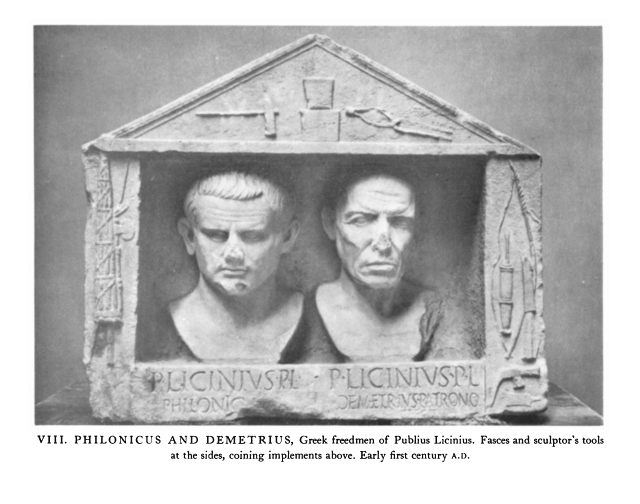

British Museum, inv. no. 1954,1214.1
“Marble relief with portraits of the freedmen Publius Licinius Philonicus (younger man) and Publius Licinius Demetrius. On the left are the rods and axes used in the ceremony of freeing a slave. In the pediment are the tools of a smith or moneyer, and, on the right, the tools of a carpenter.” in the British Museum
Marble, Roman 30-10 BCE
Europe: Italy: Lazio: Frascati: Villa Muti
The emblems in the pediment – tongs, hammer, and dies – may be those of a money-maker, or a blacksmith’s tools. The fasces at the left (bundle of twigs with an axe protruding) was carried by a Lictor walking in front of leading Roman magistrates. The tools on the right are perhaps those of a carpenter rather than a die-cutter’s and engraver’s tools including the bow drill, as once thought.
Each man is a Libertus (freedman) of their Patronus. P. Licinius Stolo, a moneyer at the time of Augustus, one of the ‘tresviri aaaff’ responsible for coinage was once a candidate for patron of the freedmen.








